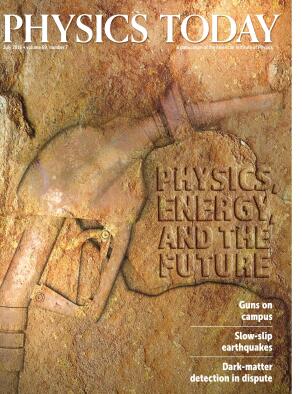The linear no-threshold theory: Readers weigh in
DOI: 10.1063/PT.3.3211
Should low-dose nuclear radiation be feared? Jeffry Siegel, Charles Pennington, and Bill Sacks (Physics Today, January 2016, page 12
Yukiko Shimizu and coauthors report on the correlation of radiation exposure and circulatory disease risk from 1950 to 2003 for survivors of the atomic bombs that devastated Hiroshima and Nagasaki. 1 Their figures 1 and 2 show good linear fits of disease risk and radiation dose from 0.1 Gy to 2.5 Gy. There is no indication of a threshold in either figure.
Zbigniew Jaworowski (Physics Today, September 1999, page 24
A 2009 review of the 1986 Chernobyl disaster presented a detailed analysis of the resulting radiation deaths. 3 It finds that the earlier estimate of 50 000 deaths should be doubled to 100 000. Again, it confirms the linear hypothesis. The review article is of special importance since it lists many deaths—about half of them, in fact—that were not related to cancer. Siegel and coauthors discuss only cancer.
I urge physicists to examine this and other recent research to determine the validity of the linear hypothesis, with no threshold. We can anticipate informative studies in the next 15 years on effects of the Fukushima disaster, but we should not wait. Fifty years ago we had a vigorous (even rancorous) controversy on possible dangers from radiation in atmospheric tests of atomic and hydrogen bombs. The main antagonists in the US were Linus Pauling and Edward Teller. In the Soviet Union, Andrei Sakharov said that if the linear hypothesis were correct, then each megaton tested in the atmosphere resulted in 10 000 deaths. Today we should be able to discuss those issues as scientists and determine the truth of the linear hypothesis. What is the evidence? Has the linear hypothesis risen from “proven untrue” or “not proven true” to “probably true” or “true”?
Once we know the science on possible dangers of low doses of nuclear radiation, we must go further and look at problems caused by the use of nuclear power. If the linear hypothesis is indeed “probably true,” then we must develop procedures for the safe disposal of nuclear waste. At present we are creating more and more nuclear waste without any plans in the US for its disposal.
References
1. Y. Shimizu et al., BMJ 340, b5349 (2010). https://doi.org/10.1136/bmj.b5349
2. J. Beyea, Bull. At. Sci. 68, 13 (2012). https://doi.org/10.1177/0096340212445025
3. A. V. Yablokov, V. B. Nesterenko, A. V. Nesterenko, special issue: “Chernobyl: Consequences of the Catastrophe for People and the Environment,” Ann. NY Acad. Sci. 1181 (2009).
More about the Authors
J. S. Levinger. (levinj@rpi.edu) Rensselaer Polytechnic Institute, Troy, New York.




